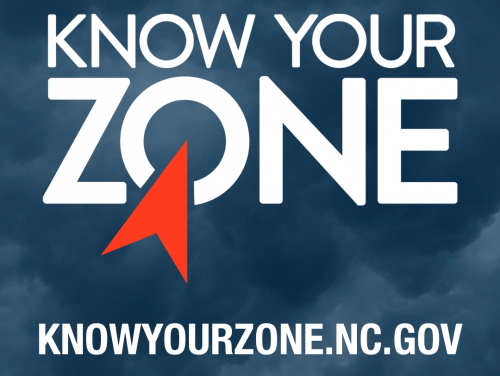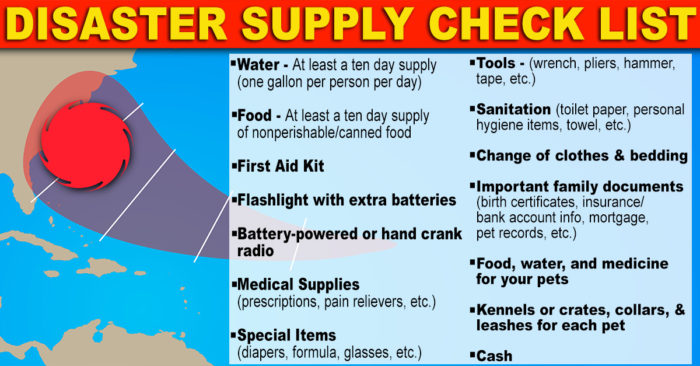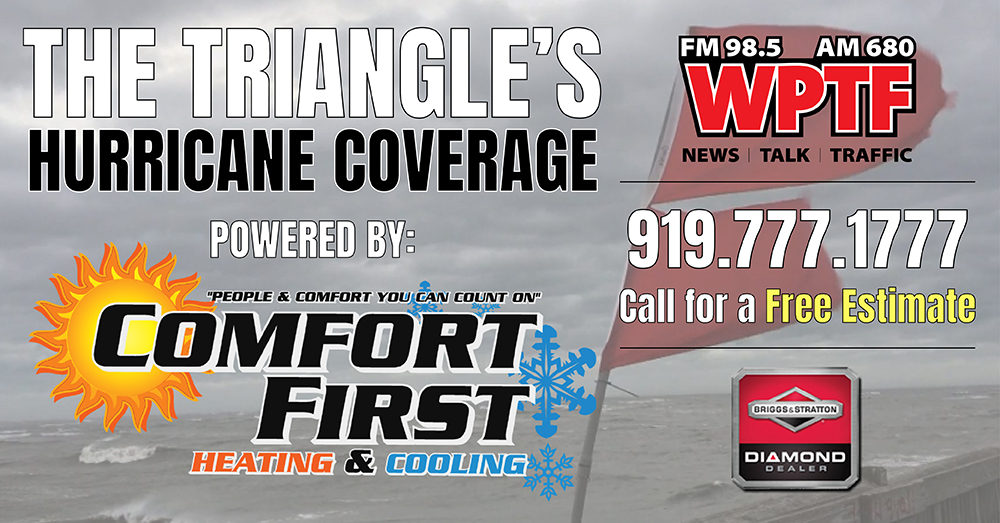Hurricane Season 2023
Hurricane season officially begins June 1 and runs through November 30. You may visit nhc.noaa.gov for current hurricane information or check out the hurricane activity map below.
Current Hurricane Activity Map
Prepare: What Will You Need?
- Be sure to include additional supplies in your emergency kit to stay healthy: masks, hand sanitizer, cleaning products, and sanitizing wipes.
- Visit ReadyNC.org to learn how to create a family emergency plan and build your emergency supplies kit.
Plan: Where Will You Go?
- If you need to evacuate to a safe place:
- Make a plan to stay with family or friends inland.
- Stay at a hotel inland.
- Locate a storm shelter in your community at NCDPS.gov.
Sheltering
- Make plans to stay at a safe place inland with family or friends, at a hotel, or storm shelter if you need to evacuate.
- Follow your local government website and social media channels for sheltering information.
- Shelters may not offer cots for sleeping, only safe refuge until a storm passes. Plan to bring your own amenities like food and bedding.
Stay Informed: Who Has Reliable Information?
- Visit ReadyNC.org to learn about local hazards that could impact your area.
- Register for emergency alerts from your local government.
- Follow your local government’s social media channels.
- Subscribe to National Weather Service updates.
- Follow North Carolina Emergency Management on Twitter and Facebook.
Evacuation

- Protect yourself from the physical dangers of a hurricane, like a storm surge, flooding, and high winds.
- If your area is ordered to evacuate, do so quickly and calmly. Don’t forget your emergency kit.
- If you live in a coastal community, be sure to Know Your Zone. Find out if you live in a predetermined coastal evacuation zone. Learn more at knowyourzone.nc.gov. Many coastal counties will use these zones to order evacuations
- Take time now to review your evacuation routes. Plan for a primary route and an alternate.
Make a Disaster Kit
Prepare for the storm by creating a disaster kit and making an emergency plan. Store items in airtight plastic bags, and put your entire disaster supplies kit in one or two easy-to-carry containers such as plastic bins or a duffel bag. Make sure all family members know where the kit is kept. In case you are stranded, keep a kit of emergency supplies in your car.

Some Items to prepare are:
- Water: Buy plenty of bottled water to keep on hand or fill your own bottles. You should have one gallon of water per person per day for at least three days for drinking and sanitation.
- Food: Stock up on nonperishable food such as canned foods, peanut butter, and granola bars. At least a three-day supply of non-perishable food. Be sure to have a manual can opener as well.
- Food Prep Items: Keep charcoal, wood (for the fireplace), or gas (for a gas grill) on hand in case of power outages.
- Ice: Freeze a gallon jug of water to keep your refrigerator or freezer cool in case of a power outage. Can’t find water jugs? Fill gallon ziplock bags and freeze them. Not only will your food stay cool, but you can drink the water too.
- Clothing and Bedding: Remember that your air conditioner or furnace may be out if the power is out. Have appropriate clothing and bedding available for high or low temperatures.
- First Aid Kit: Make sure your first aid kit is easily accessible and stocked.
- Batteries: Stock up on batteries for radios and flashlights.
- Flashlights and Matches: Make sure you have flashlights and matches in case of a power outage. Flashlights will help you see in the darkness at night while matches can be used to light your grill or start a fire in your fireplace for cooking.
- Radio: A battery-powered or hand-crank radio and a NOAA Weather Radio with tone alert.
- Whistle: To signal for help.
- Tools: Wrench or pliers to turn off utilities.
- Medications: Have prescription medications available. Gather non-prescription medications such as pain relievers, anti-diarrhea medication, antacids, and laxatives as well.
Learn more about disaster kits at ReadyNC.org or NC Disaster Information Center.
More Hurricane Resources
NC 2-1-1: All NC residents can dial 2-1-1 to reach a trained call specialist who can help them find shelters, learn evacuation routes, find help with storm clean-up, locate food, water, and ice, learn about volunteer needs, and more. The service is available 24/7 and is available in English and Spanish. Visit NC211.org.
Ready NC: Visit ReadyNC.org for information on how to prepare for the storm. Download their free app to learn about weather conditions, traffic conditions, shelters, evacuations, and more.
Hurricane Resources
- National Hurricane Center Storm Tracking
- National Hurricane Center Preparedness
- NC Disaster Information Center
- Preparedness Tips for People with Disabilities
- Preparedness Tips for Pets and Animals
- County Emergency Management Agencies and Alerts
Road Closures: Find out about road closures due to flooding or storm damage due to downed trees or power lines at DriveNC.gov.
Power Outage Information: Make sure you have your power company’s phone number so you can call them if your power goes out during or after the storm.
Shelters
- DHHS: View open shelters.
- FEMA: Find shelters (once they have opened) by texting “SHELTER” and a zip code to 4FEMA (43362). For example, for the Wilmington, N.C. area you would text to 43362: SHELTER 28401 (Wilmington’s zip code).
- Red Cross Shelters: View a list at redcross.org/shelter.
- Orange County: Residents can text OCStorm to 888-777 to get updates about shelters, road closures, and more.
